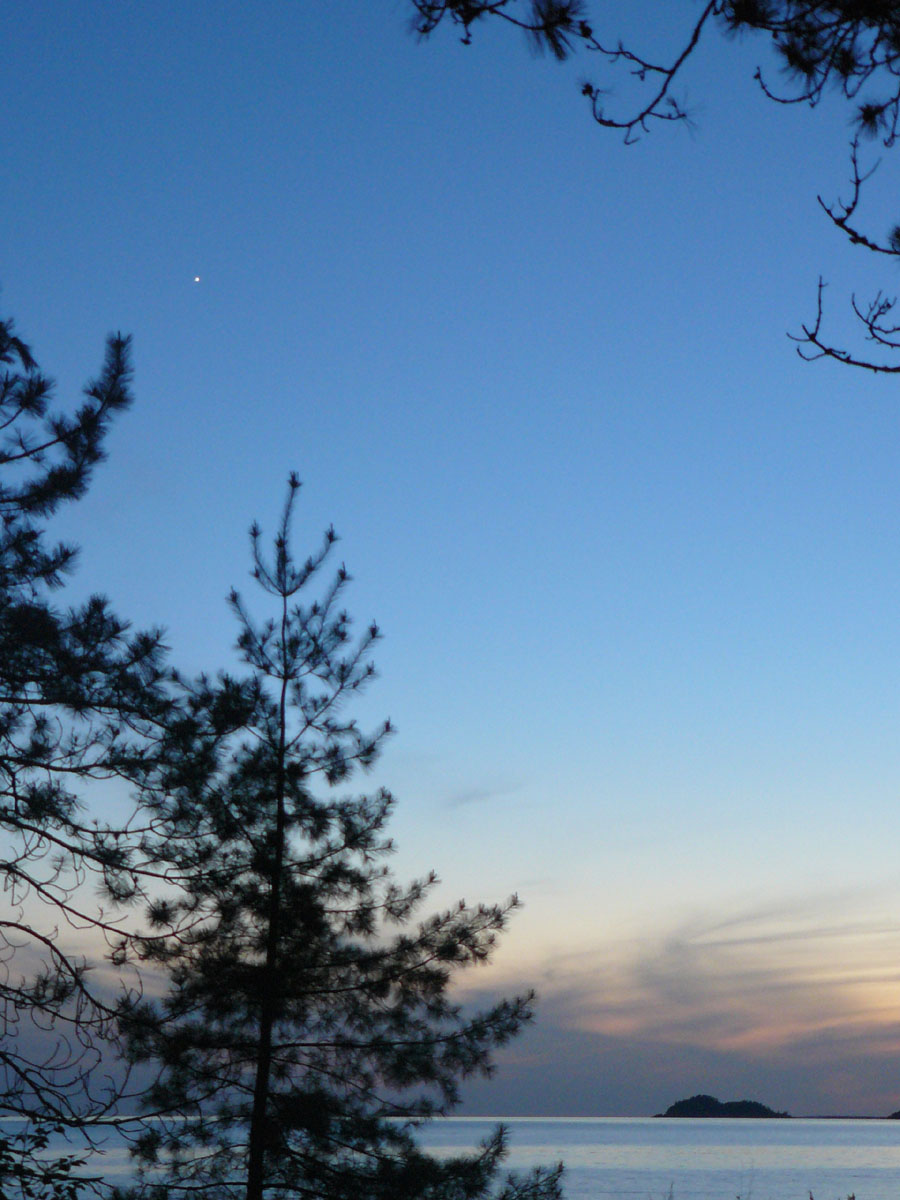 Location Taken: Agewa Bay, Ontario
Location Taken: Agewa Bay, Ontario
Time Taken: June 2010
Did you know the Evening Star is the planet Venus?
I know, it’s pretty common knowledge these days. Still, it’s rather nifty to look at a dot in the sky and realize that it’s another orb of rock similar to the one you’re standing on, close enough that we’ve sent devices to land on it.
And land on it is about all they did. The Russian probes I’m thinking of, the Venera missions didn’t exactly last long after hitting ground, since the heat and pressures of the surface of Venus do nasty things to delicate instruments and radios and cameras. Still, we do have a few photos of Venus’s surface, even if they’re grainy, low resolution, and all the other things you’d expect from mid-1900’s camera tech. The last lander launched in 1984, a few years before I was born, and decades before digital photography got good enough to supplant film.
They seem to have had a lot of problems with lens caps in these missions. Most of the landers didn’t carry cameras, and of the ones that did, well… Venera 9 and 10 both had one of their two cameras fail to release the lens cap on landing as it was supposed to do, so they literally took half the photos they should have. That’s still better than 11 or 12, which didn’t get any photos at all because all the lens caps stayed firmly in place on landing. Venera 13 and 14 actually managed to get the full panoramic, but 14 had a different issue. It had a special device on one of its arms to study the surface compressibility – but one of the lens caps fell directly under the arm and well, they got nice data on how compressible the lens cap was…
It does seem odd comparing the very few photos we have of Venus to the high quality photos we’re getting from the newest Mars Rover, Curiosity. It makes you wonder how much better we’d be able to do if we sent a new camera-equiped lander to Venus. We’ve probably got the tech to build one that can resist the heat and pressure these days.
Although you can see why they haven’t bothered yet. The Venusian surface is a little… boring. Lots of flat rocks, and a few hills. And its thick hot atmosphere makes it even less likely to harbor life than bone-dry Mars, and far less likely to be able to terraform for human life.
Still, it is a bit odd that we’ve got less photos of the surface of one of the closest planets to us than we do intentionally grainy photos of random people’s lunch. Ah, the priorities of modern life.
